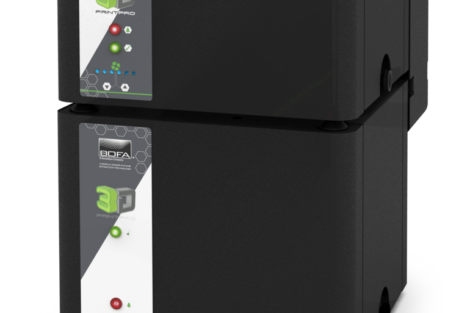When examining the capabilities of an existing or considering a new oven for lead-free board assembly, more factors should be examined than simply how hot does it need to be?
For a start, the best thermal ovens on the market need only be set 30 to 40K higher than the required peak temperature, when matched with speeds for the zone configuration. The myth is that a capability of 350 or 400 °C is required for lead-free, when in reality the top temperature required depends on the thermal dynamics for a lead-free reflow temperature of 245°C, the peak required set point on the heater in the reflow zone should be 285°C. The design guideline on speed can be easily calculated from the length of the heated section divided by the time to peak as specified by the paste manufacturer. For example, if you have 2,500mm of heat-zone length and the required time to peak is 3.5 minutes, the speed should be 710mm per minute. (If you have a faster speed or process extremely large or heavy products, higher temperatures may be required.)
Oven construction – As temperatures increase, all areas of oven design and build should be reviewed. The oven chamber should be of stainless steel, which is highly resilient to temperature. A furnace with aluminum in the heated section may become brittle at temperatures above 270°C, leading to failures. Blower motors also come into contact with higher temperatures, so motor cooling and shaft and bearing durability should be considered. Oven insulation, gasketing and interconnects must all be capable of operating at the higher lead-free temperatures. Ask any company offering to upgrade your existing oven about these additional considerations. Bear in mind that a good wire-type heater is capable of reaching 600°C, but in all likelihood the system would melt down.
Board support – This is becoming the number one sales option on all ovens that we supply. As the temperature increases at the plateau stage of the profile, the board spends longer time above the glass-transition temperature for FR4. As the top temperature increases, the PCB becomes less rigid, with the result that the board comes out like a banana. The support system is critical during the complete process above the Tg range. Support must continue into the cooling section. You may want to look at different types of board material, but look out for the cost.
Flux management – This has always been an issue companies investigate when purchasing a system where the process uses nitrogen, but as the lead-free alloys have more flux present per volume of paste and release more volatiles into the atmosphere during the process, the increased flux residue has to be taken into account. Even air processes now need to look at flux management and the implications for maintenance, process performance and environmental legislation.
Thermal transfer – Critical to get the lowest temperature difference between set point and PCB actual temperature. The most advanced systems give closed-loop control over this process by monitoring the energy required to release the energy from the air molecule to the assembly. The energy required is dependent on fan speed, so if the speed is regulated in relation to the pressure in the heated section, the transfer of energy can be controlled. This also will lead to a low temperature differential across the board. Remember, though, that as temperatures increase for lead-free manufacture, the air molecules get further apart; as fans work on backpressure the result is less thermal energy going into the product. Increasing the fan speed will compensate for the thermal loss.
Gerald Rutter, BTU Europe, regional sales manager
Share:











